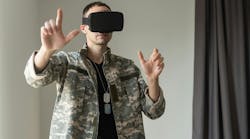Mac wanted fixtures to match the energy and excitement of the performance, and the hi-impact PixelLines were an obvious choice. He first used PixelLines - approx 140 of them - on Party In The Park this summer, working with LD Vince Foster - on a show that also utilised PixelDrive software for control.
The onstage four PixelLines were attached to Y-braced scaffolding bars behind the drum kit, while the four offstage ones were clamped to two elements of a ‘double V’ shaped upstage truss, angled from floor to ceiling behind the band.
The PixelLines were always used in primary colours and snaked across the stage in pulsing and rippling chases, or were blasted into the audience as part of Prodigy’s fully immersive visual and sonic dance assault.“I really like them,” declares Mac, “and I’m looking forward to the chance to using a lot more in the future”. He says that with 20 or 30 PixelLines in the rig his imagination would really start to run wild, but also comments that it’s amazing what you can do with just eight fixtures.
All equipment was supplied by PRG. Sound was from Canegeen, with Jon Burton mixing FOH and Joe Campbell on monitors.
PixelLines on the X-Factor
Lighting designer Al Gurdon specified 78 James Thomas PixelLine battens as part of his lighting rig for ITV’s current top-rating series of the X-Factor.
On the floor below, the centre ‘X’ PixelLine configuration is mirrored using another 32 battens, this time set below a frosted Perspex floor.
These 64 battens are being driven by video images created specially for the show by lighting operators/programmers Svend Pedersen and Ross Williams and graphic artist Chris Plant, designed to compliment the geometry of the stage and Christopher George’s set. The images are stored and manipulated in a computer running PixelMAD software, and output via the WholeHog II lighting console used to run the show’s lights.
The ‘X’ PixelLine fixtures are configured in Max 1 (wide mode), enabling each of the batten’s 18 cells to be controlled individually, which looks particularly dramatic with high contrast, low-res video footage effects blasting through them. “They’re extremely versatile in wide mode” says Gurdon, and it offers a refreshing new look to the PixelLine image and effect.
A further seven PixelLines per side are used to delineate the edges of two more flown scenic X’s that flank the central one. These are used as conventional light sources as opposed to receiving video input.
All The PixelLines were supplied by main lighting contractor PRG.








